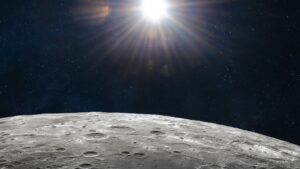There’s a neutron star out there that — if you shot it with a pellet gun — could trigger an apocalyptic nuclear detonation. It’s the size of Newark, New Jersey, but you’d better pack your SPF 500,000,000 if you somehow visited it.
So how is this star, known as M82 X-2, radiating 10 million times more energy than the sun?
A million megaton marshmallow
Technically, nobody knows. The (current) laws of physics cannot explain how it holds itself together. There’s so much gravity on M82 X-2’s surface that if a marshmallow hit its surface, it would explode with the force of a thousand hydrogen bombs, NASA explained with a touch of gusto.
The story began all the way back in 2014, when NASA’s Nuclear Spectroscopic Telescope Array (NuSTAR) first discovered M82 X-2. NuSTAR was scanning the firmament at the time for ultra-luminous X-ray sources (ULXs). These are celestial objects that are brighter than should be physically possible.
The Eddington limit
That threshold is called the Eddington limit. It’s the accepted boundary of how much light an object (like a star or a black hole) can emit based on its mass.
These bodies only exist because they manage to achieve some balance between radiation (pulling outward) and gravity (pressing inward). Luminosity comes from particles raining down onto these celestial bodies, which heat up as they approach their surfaces.
The Eddington limit is the point right before the tension breaks, and the object either pulls itself apart or implodes.
Enter the exception to the rule. Astronomers have long theorized that ULXs break this physical law. Now after almost a decade, a study in The Astrophysical Journal confirms that M82 X-2 is that celestial unicorn.

The first image of M82 X-2 in 2014, combining stills from three different telescopes. Photo: NASA/JPL-Caltech/SAO/NOAO
Somehow, the tiny star is consuming a giant nearby.
“Like a cosmic parasite, M82 X-2 is stealing about 9 billion trillion tons of material per year from a neighboring star, or about 1 1/2 times the mass of Earth,” NASA reported. “Knowing the amount of material hitting the neutron star’s surface, scientists can estimate how bright the ULX should be, and their calculations match independent measurements of its brightness. The work confirmed M82 X-2 exceeds the Eddington limit.
Yes, it would be a bad day on M82 X-2 if anything bigger than a pea landed on it. Scientists think it’s holding its shape by stretching out incoming particles into long, spaghetti-like strands before impact. The Eddington limit holds that outbound photons push material aside as they surge into space. But the new theory says that the extreme gravity of a neutron star like M82 X-2 can turn particles into filaments fine enough to dart through the outgoing blast.
Impossible to recreate
It’s all just theorizing for now. Recreating such extreme gravity on earth is impossible, because the forces at play are billions of times stronger than the strongest magnets ever created.
“This is the beauty of astronomy. Observing the sky, we expand our ability to investigate how the universe works. On the other hand, we cannot really set up experiments to get quick answers,” astrophysicist Matteo Bachetti and lead author of the study, told NASA. “We have to wait for the universe to show us its secrets.”
In the case of M82 X-2, we won’t have to flip on a light switch to see those secrets.






